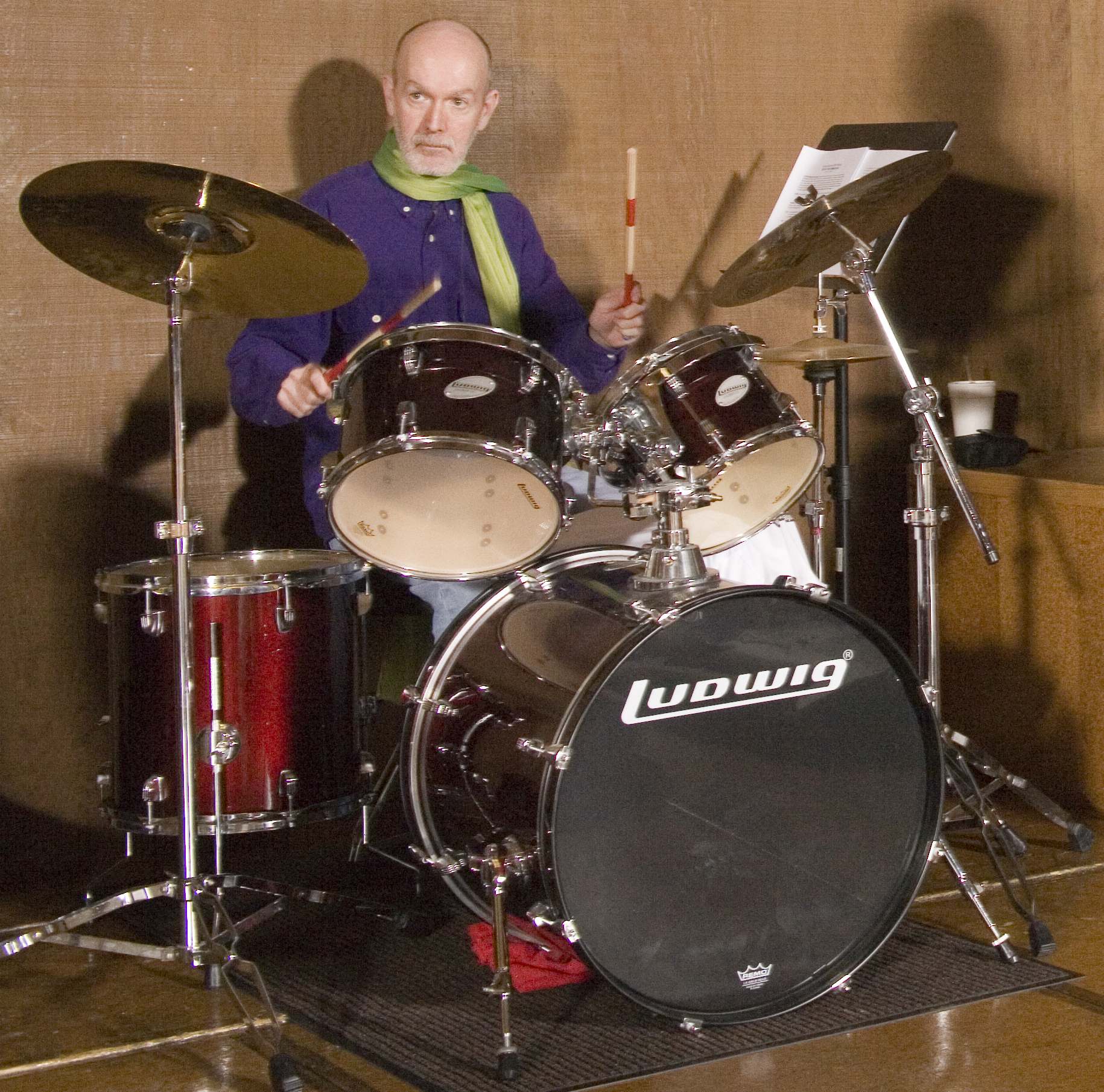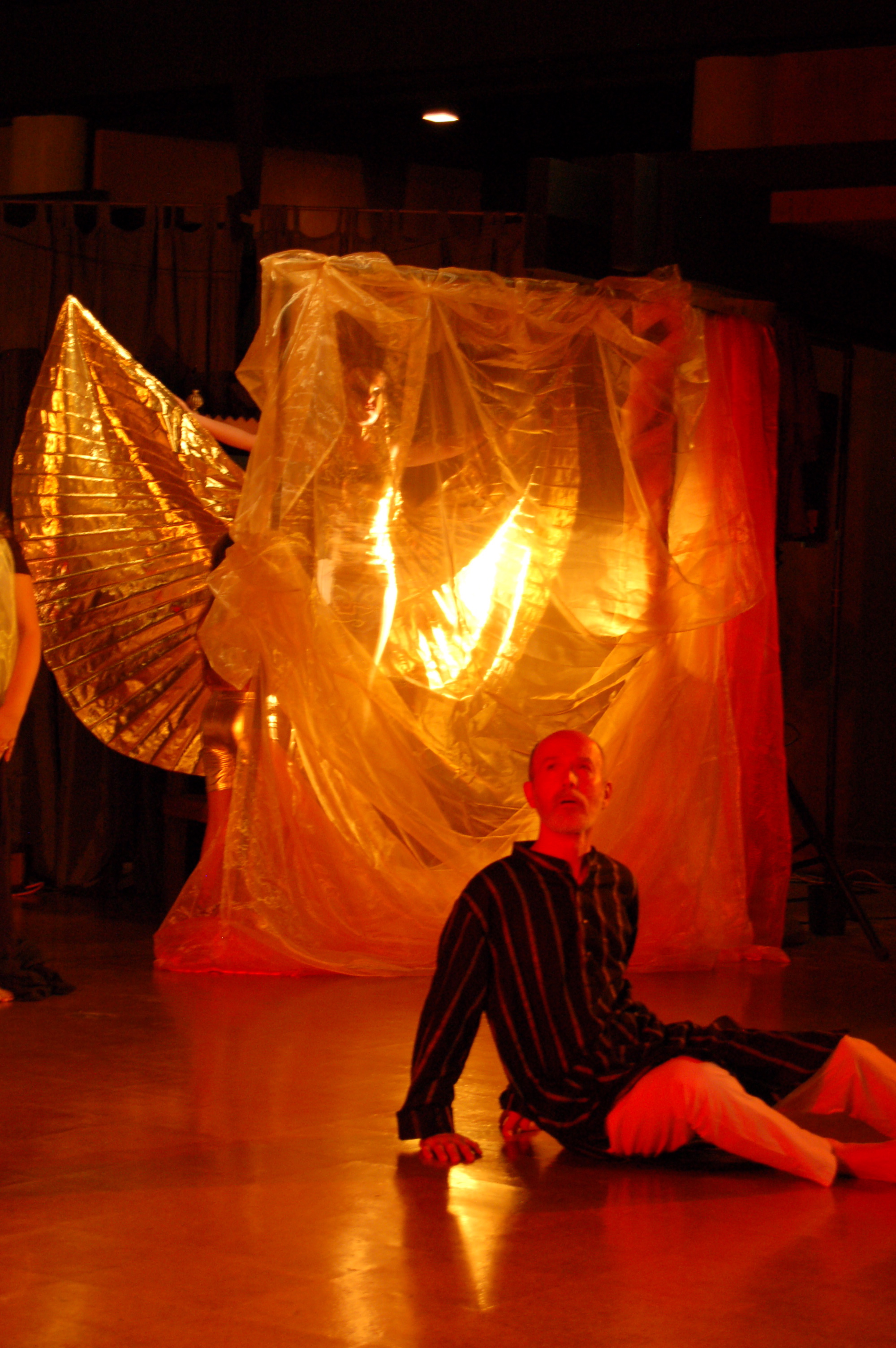One of Our Own. . .David Jacks
by: Jeanne Leiter aka Pythia
 Continued. . .Both
Mother and Father applauded two-year-old David swinging his hips and
playing air guitar, imitating the Elvis he had just seen on the Ed
Sullivan show. Six years later they encouraged him as he piled chair
and sofa cushions around him, watching the Beatles on tv, he
imitated Ringo. As he watched and listened to Beatle music, he
assigned his separate cushions to be various drums and, believe it
or not, taught himself to play the drums this way! He also taught
himself to play the guitar and the bass.
Continued. . .Both
Mother and Father applauded two-year-old David swinging his hips and
playing air guitar, imitating the Elvis he had just seen on the Ed
Sullivan show. Six years later they encouraged him as he piled chair
and sofa cushions around him, watching the Beatles on tv, he
imitated Ringo. As he watched and listened to Beatle music, he
assigned his separate cushions to be various drums and, believe it
or not, taught himself to play the drums this way! He also taught
himself to play the guitar and the bass.
He’s been a habitual movie-goer since he was a
kid, then a friend he met in theatre class in high school introduced
him to movie-making. As a film major he realized that everything,
acting, stand-up comedy, drumming, editing, was all interconnected.
It was very clear to him. The connection is. . .timing. "To be good
at anything needs timing," is one of his beliefs. He also thinks it
doesn’t hurt to have the appropriate genetics.
When he moved to Los Angeles and obtained a job at
a post-production company, his boss had him contact and work with a
recording studio. The person he met there, Van Webster, became a
friend and eventually they started jamming. Now, after many years of
playing for pleasure, the two friends and five others are performing
locally. Recently, they appeared at Café 322 and the Wisteria
Festival in Sierra Madre, California. All seven of the band members
play guitars, hence their name: Too Many Guitars.
One of his past jobs involved creating the entire
sound ambiance when Universal Studios Tour started-up in Florida. He
generated a particular atmosphere for each section of the park. For
instance, the Hollywood section had music peculiar to movies, where
the New York section reflected Broadway plays and Times Square.
While working at the post-production company he
met Kathleen Forrest. They’ve been together for over thirty years.
Kathleen is his biggest fan, going to each and every ‘gig’ and
recording it on tape. He’s presently a music supervisor at E!
Entertainment Television. His avocation, and passion, in his
off-hours is his book. This book has been in the making for several
years, telling "the continuing, adventurous saga of D.J. Mensa" aka
Peter Asher through various interviews that David has conducted with
those who worked with Mr. Asher (including David Crosby, Randy
Newman, Robin Williams, and Kevin Kline). Peter Asher, after his
professional singing career, served as producer for multi-platinum
albums from Linda Ronstadt as well as working with James Taylor,
Cher, and Bonnie Raitt, to name a few. David believes that Peter
Asher has not been given the recognition that he so rightly
deserves, and feels that this book might help balance the scales.
They make their home in the San Gabriel Valley along with two cats,
Aja and Juno.
He found Temple of the Goddess through Kathleen,
but enjoys his part in the music ensemble. As he has grown into
adulthood, he isn’t sure what to call his spiritual path since he
doesn’t believe in any particular belief system. He is pretty sure
about several things, though, one is that there is something ‘out
there’ that is bigger than any one of us. Secondly, he supports the
messages that Temple of the Goddess is presenting to the Pagan
community, and to the world. "I try to do my little bit to help Xia
and Temple of the Goddess put more good vibes out there."

His
help is greatly appreciated at the Temple as he arrives early to
each ritual in order to help Van set up the microphones and a sound
board that controls sound quality. Before David, we had no
recordings of Temple rituals. Now, we can proudly say we have CD’s
of the myths, the wonderful music of the musicians, and we can hear
the choir blending their beautiful voices any time we wish.
I watch David play the drums, both at Temple
rituals and at his gigs, and I see the trance state he enters. I
also see the joy on listeners’ faces as they listen to his soul
vibrating the air. I just wish more people were like David, putting
out some good vibes . . .the world would be a happier, better place.
~ ~ ~ ~
~ ~ ~ ~ ~
~ ~ ~ ~
The Secret Garden
by: Gloria Avrech
Continued. . .
On a cold wintery morning, Mary leaves the dark,
dank, decaying manor house and begins to explore its grounds. She
meets her first friend at her new home, a robin. This robin, like a
shaman’s power animal, leads our wounded healer to a secret garden
that has been closed off for ten years, since Lord Craven’s wife
died from a fall off the garden swing. The robin helps Mary find the
hidden garden door, which she opens with a key she had found in her
dead aunt’s bureau. With the special help of a boy who lives on the
estate, a Pan-like figure named Dickon, Mary brings this moribund
garden back to life. The garden becomes the temenos for the
transformation, healing, and restoration of all the wounded
characters.
The image of an enclosed secret garden is a
compelling archetypal motif. In this film it is a beautiful image
symbolizing the life-giving, protective, and nurturing qualities of
the Great Mother archetype, and an alchemical image of the Self.
After Dickon teaches Mary to plant seeds and tend their growth, we
watch in slow-motion cinematography as roots extend deep into the
earth and flowers bud and bloom. Mary brings Colin into the garden,
and as the year progresses through its seasons, both children, like
the garden, come alive and regain physical and emotional vitality.
Erich Neumann, a first generation follower of Carl Jung’s
philosophy,
writes about the power of nature in
The Child:
"If the damage did not occur too early, if the
earliest phase of life was characterized by a positive primal
relationship, a compensatory experience of the Great Mother as
impersonal archetype of nature, or as a tree, garden, forest, home
or sky is perfectly possible. . . Here the primordial, archetypal
experience of the world comes into its own, and forest, garden, or
tree as symbol of the Great Mother becomes the Great Mother herself,
ready to embrace the child in need of help. (p. 80)"
One night in the garden, Mary, Colin, and Dickon
perform a ritual that telepathically summons Colin’s anguished and
forlorn father home. Lord Craven symbolizes the masculine crippled
by the loss of love in a one-sided patriarchal world. His response
to the mysterious call portrays a deep psychic process: An
over-burdened, masculine ego is revitalized by new attitudes gained
from a connection to the child Mary, who leads him back to his son,
and to the Great Mother archetype (the garden, which is the healing
container for all of them).
Mary’s communion with the secret garden is the
dominant healing theme, but other restorative strategies are shown
as well. In one scene, Mary intuitively uses a homeopathic-like
remedy; she defuses Colin’s tantrum by angrily ordering him to shut
up! At another point she soothes Colin with imaginal storytelling
techniques. At various times she utilizes a modern mind-body
technique of positive thinking: When Colin first struggles to walk,
she repeatedly exhorts, "You can do it!" And Mary and Colin
together, in a shamanic mandalic circle ritual with others, use
chanting, music, dancing, and play to telepathically summon Lord
Craven home from France. Like all fairy tales, this story has a
happy ending. Although it might seem an overly simplistic and
sentimental resolution for those of us jaded by a century of war and
other kinds of violence, The Secret Garden conveys a psychic
truth regarding humankind’s inner drive for healing.
Gloria Avrech, Ph.D., L.C.S.W. is a Jungian
analyst in private practice working with people of all ages in
Pasadena, California.
Reprinted from Psychological Perspectives, 1994
(Fall/Winter), Issue #30

